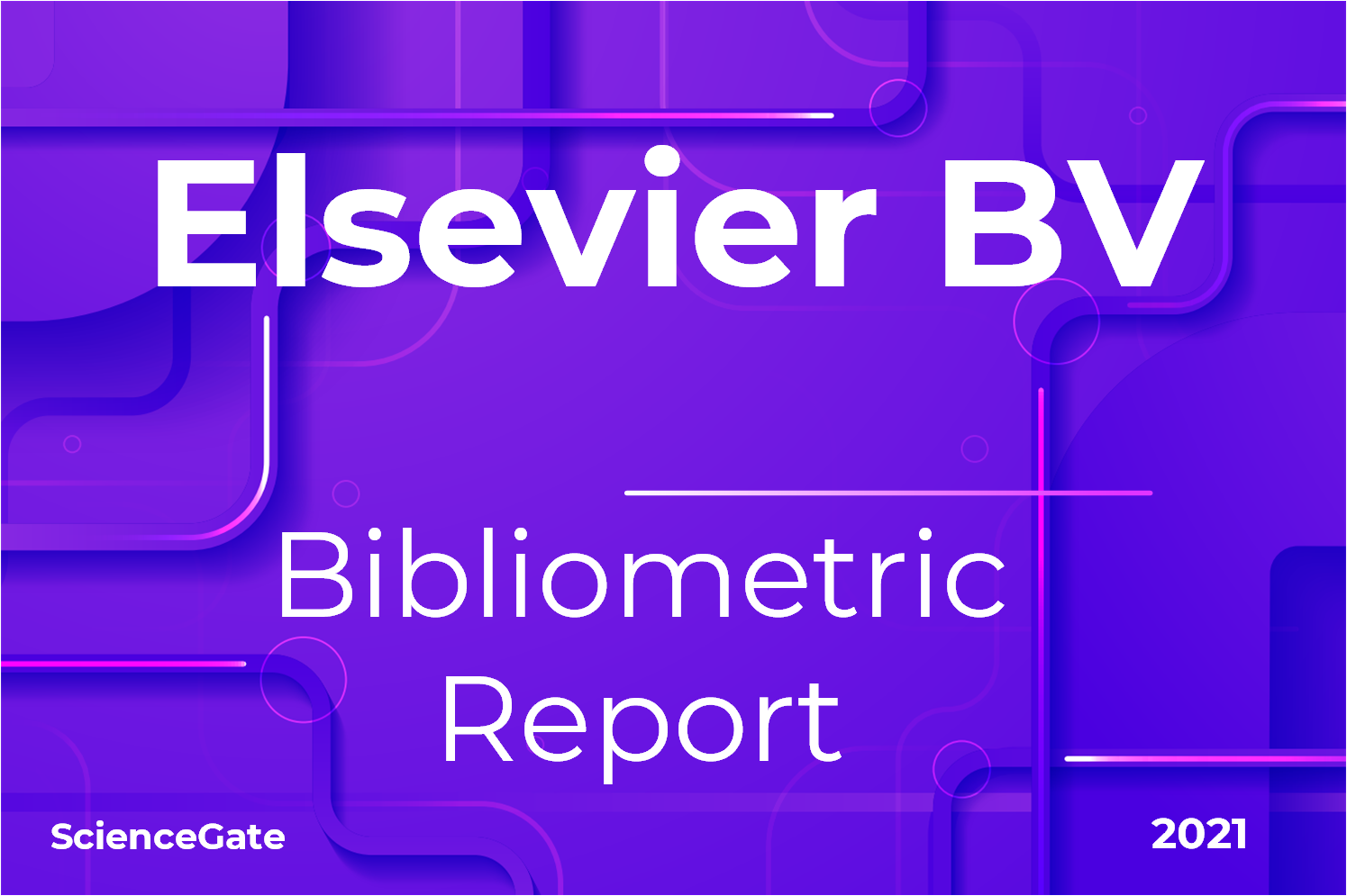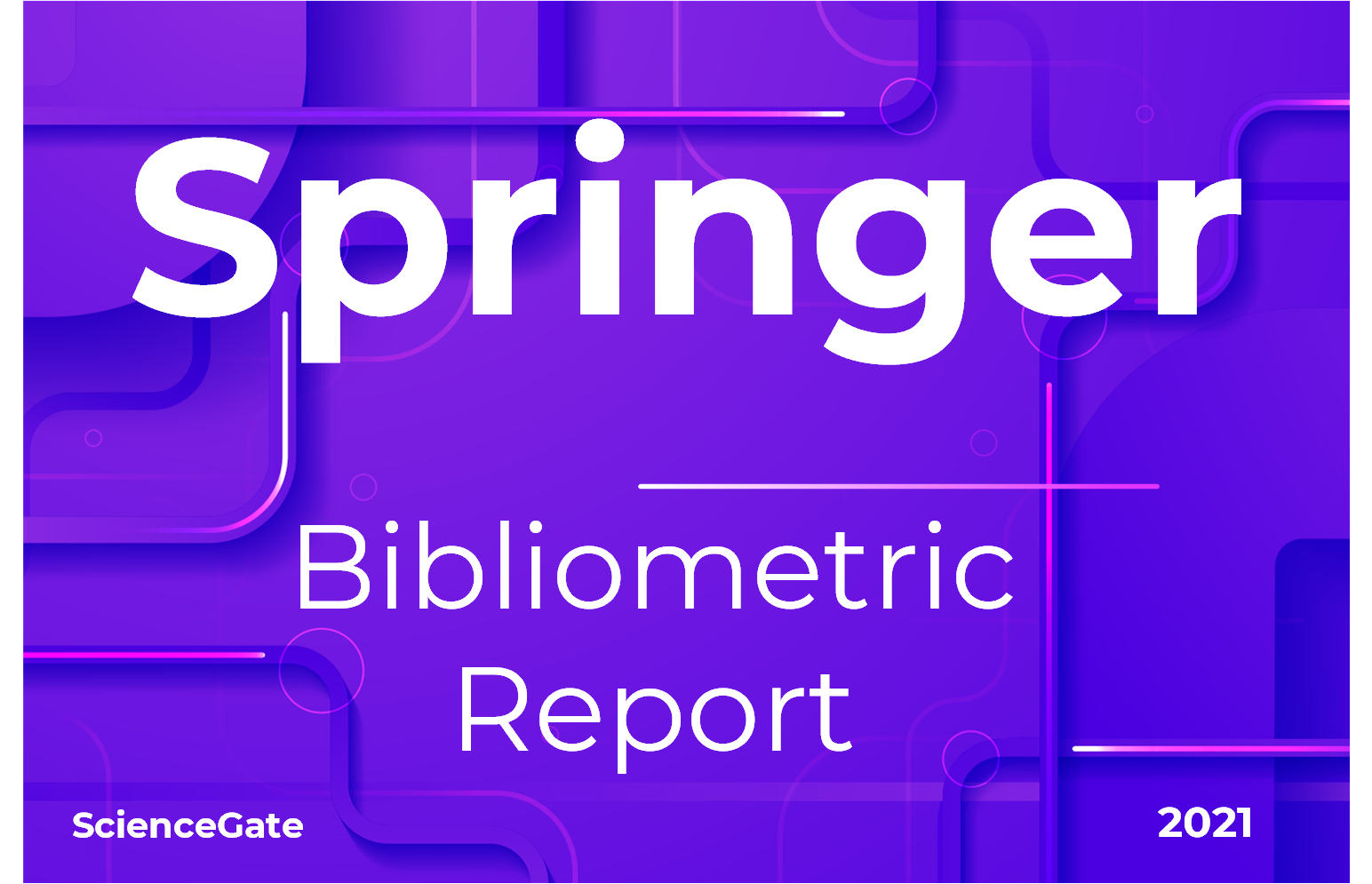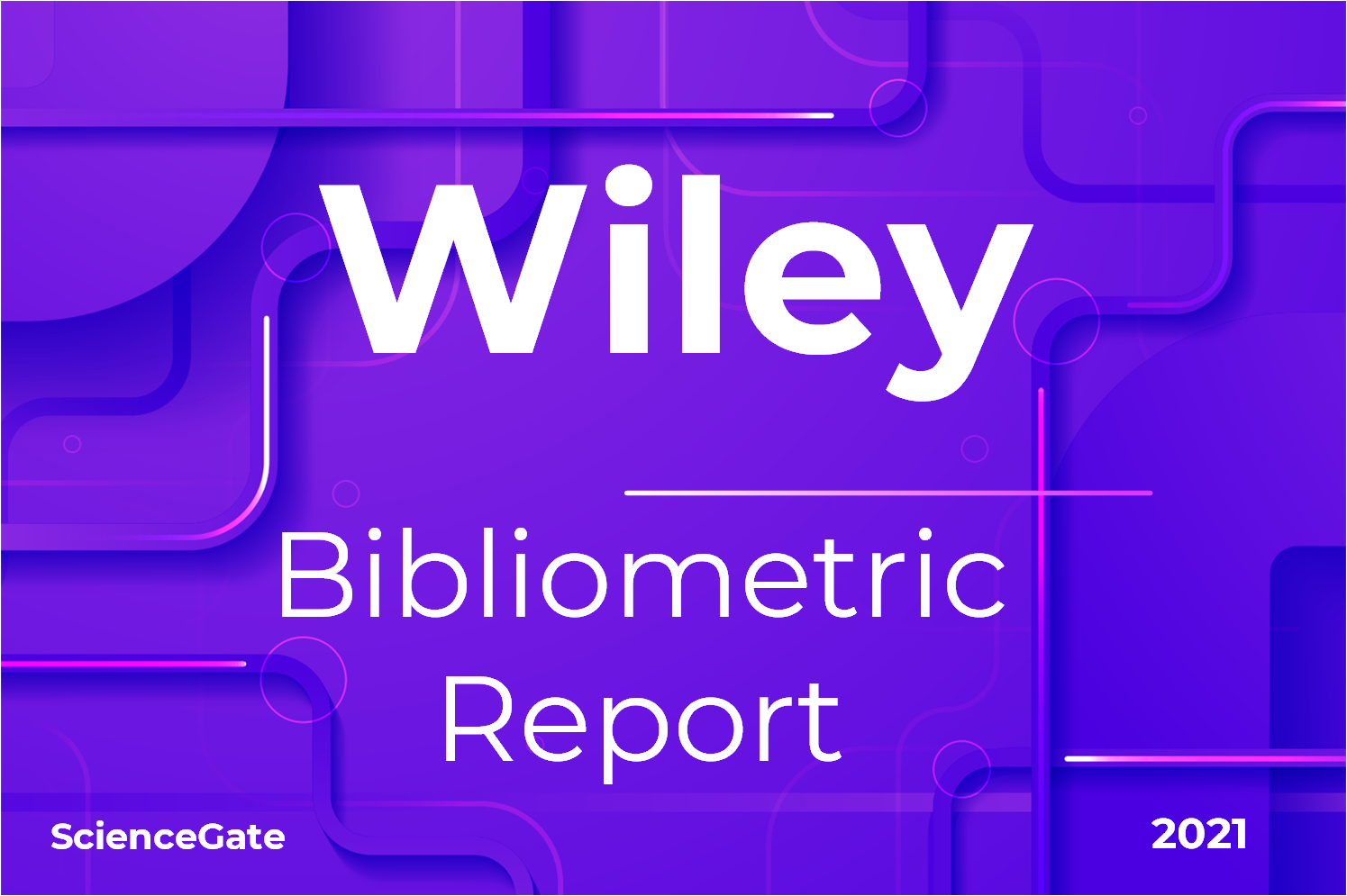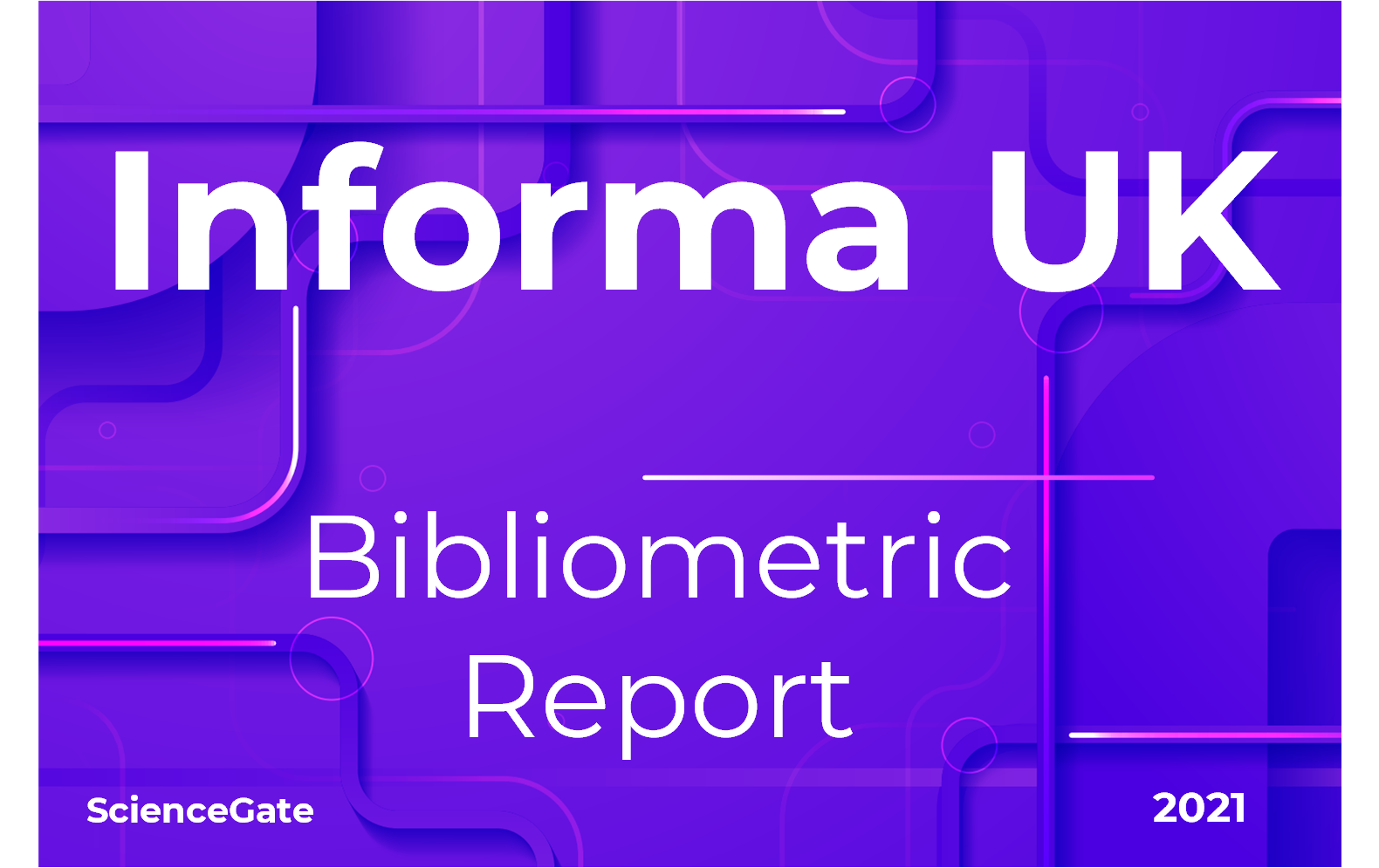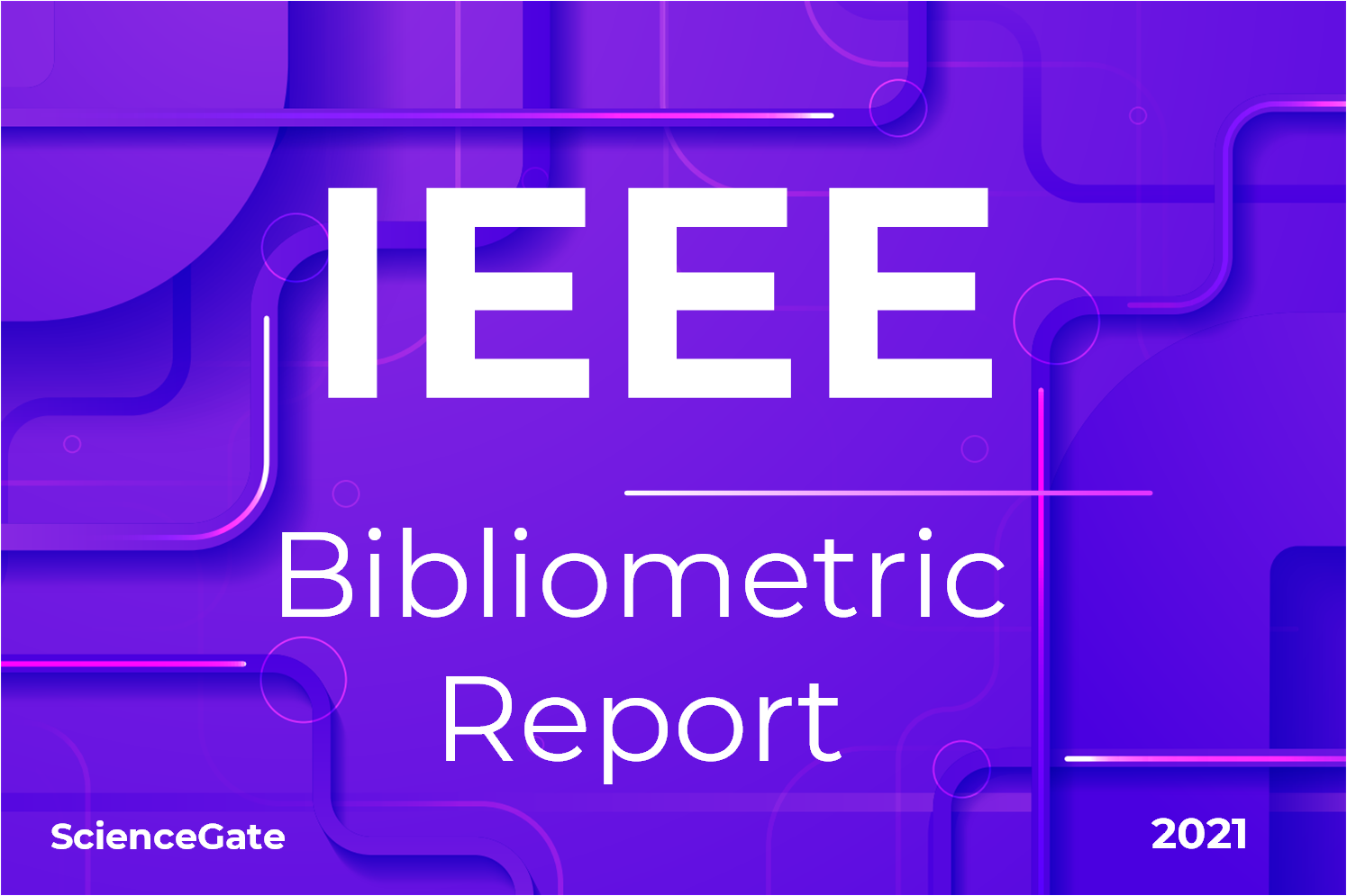Introduction
This report provides a comprehensive analytics report of the publisher The Chemical Society of Japan including basic bibliometric information, citation data, impact metrics, top journals, publication keywords, etc., over recent years. The Crossref database (up to the end of 2021) processed by ScienceGate has been used for this report as the source of data.
The Chemical Society of Japan has published 108797 documents so far, receiving a total of 822963 citations. These numbers are equal to 0.09% and 0.07% of the total documents and citations in the scientific community, respectively. The Chemical Society of Japan has a score of 7.56 as a number of citations per document based on all recorded data. There are different types of documents published by The Chemical Society of Japan. In this regard, , and Journal Article a with the total document number of , and 108797 have the largest share, respectively. These numbers are equal to , and 100.00% of the total documents published in The Chemical Society of Japan so far, respectively. The Chemical Society of Japan has been an active publisher from 1880-2021.
Basic Bibliometric Information
This section provides the bibliometrics data of The Chemical Society of Japan over the last 11 years, including the number of published documents, total citations, citations per document, and scaled number of citations per document by year. Share of The Chemical Society of Japan documents and citations among all published scientific documents are also presented here. The Chemical Society of Japan has the highest annual number of publications in 2015, with 781 published documents. Most annual citations are also received in 2010, with 9810 citations. The highest citations per document’s scores, scaled by the number of years ahead, are associated with 2020, with scores of 0.52.
| Year | Documents | Citations | Citations/Documents | Average Citations/Documents | Documents Share | Citations Share |
|---|---|---|---|---|---|---|
| 2010 | 737 | 9810 | 13.3107 | 1.2101 | 0.0002 | 0.0002 |
| 2011 | 700 | 8815 | 12.5929 | 1.2593 | 0.0002 | 0.0002 |
| 2012 | 753 | 7958 | 10.5684 | 1.1743 | 0.0002 | 0.0002 |
| 2013 | 696 | 5597 | 8.0417 | 1.0052 | 0.0002 | 0.0001 |
| 2014 | 763 | 7118 | 9.3290 | 1.3327 | 0.0002 | 0.0002 |
| 2015 | 781 | 7808 | 9.9974 | 1.6662 | 0.0002 | 0.0002 |
| 2016 | 631 | 4292 | 6.8019 | 1.3604 | 0.0001 | 0.0002 |
| 2017 | 671 | 4468 | 6.6587 | 1.6647 | 0.0001 | 0.0002 |
| 2018 | 629 | 3160 | 5.0238 | 1.6746 | 0.0001 | 0.0002 |
| 2019 | 593 | 2173 | 3.6644 | 1.8322 | 0.0001 | 0.0002 |
| 2020 | 660 | 344 | 0.5212 | 0.5212 | 0.0001 | 0.0001 |
Document Types
There are different types of documents published by publishers. In this section, the yearly publication data of The Chemical Society of Japan are presented by document type, including , and Journal Articles.
The number of published documents by The Chemical Society of Japan are , and 108797 for , and Journal Articles, respectively. These numbers are equal to , and 0.12% of the whole published , and Journal Articles in the database so far, respectively.
The number of received citations by , and Journal Articles of The Chemical Society of Japan are , and 822963, respectively. These numbers are equal to , and 0.08% of the citations received by whole , and Journal Articles of the database so far, respectively.
The h-index value for published , and Journal Articles by The Chemical Society of Japan are , and 168, respectively. The corresponding values for the whole data of the database are , and 3201, respectively.
The g-index value for published , and Journal Articles by The Chemical Society of Japan are , and 23, respectively. The corresponding values for the whole data of the database are , and 129, respectively.
The score of citations per document for published , and Journal Articles by The Chemical Society of Japan are , and 7.564, respectively. The corresponding values for the whole data of the database are , and 11.521, respectively.
The highest number of annually published , and Journal Articles by The Chemical Society of Japan are , and 781, respectively. The corresponding year of maximum publication for , and Journal Articles are , and 2015, respectively.
The highest number of annual received citations by , and Journal Articles published in The Chemical Society of Japan are , and 9810, respectively. The corresponding years of maximum received citations for , and Journal Articles are , and 2010, respectively.
The highest values of citations per number of document for , and Journal Articles published in The Chemical Society of Japan are , and 13.31, respectively. The corresponding years of maximum values of citations per document for , and Journal Articles are , and 2010, respectively.
Impact Metrics
Various metrics and indicators are used to evaluate the impact and quality of publishers and journals. Here, h-index, g-index, and i-index are selected as impact evaluation metrics of the publisher The Chemical Society of Japan.
H-index
H-index indicates the number of articles published by a journal/publisher, h, that have been cited at least h times. h5-index and h10-index are the h-index for papers of a publishers/journals published in the last 5 and 10 years, respectively. h-index, h10-index, and h5-index of the documents published by The Chemical Society of Japan, are 168, 68, and 41, respectively. The corresponding values for the whole data of the database are 3269, 1489, and 795, respectively.
| Metric | The Chemical Society of Japan | All Publishers |
|---|---|---|
| h-index | 168 | 3269 |
| h10-index | 68 | 1489 |
| h5-index | 41 | 795 |
G-index
The g-index indicator is the first g papers of a publisher/journal (sorted by the highest to the lowest number of citations) that have cumulatively received at least g^2 citations. Again, g5-index and g10-index are the g-index for papers of a publishers/journals published in the last 5 and 10 years, respectively. G-index, g10-index, and g5-index of the documents published by The Chemical Society of Japan are 23, 14, and 9, respectively. The corresponding values for the whole data of the database are 131, 80, and 55, respectively.
| Metric | The Chemical Society of Japan | All Publishers |
|---|---|---|
| g-index | 23 | 131 |
| g10-index | 14 | 80 |
| g5-index | 9 | 55 |
I-n index
I-n index shows the number of publications of a publisher/journal with at least n citations. Read another post here for more detailed information on different research impact metrics. It is to be noted that, i10-index, i25-index, i50-index, i100-index, i250-index, i500-index, i1000-index, i2500-index, i5000-index, and i10000-index of the documents published by The Chemical Society of Japan, are 25186, 6932, 1847, 453, 75, 23, 5, 1, 0, and 0, respectively. The corresponding values for the whole data of the database are 21796896, 10617845, 4822066, 1785083, 390499, 114230, 31648, 5505, 1423, and 355, respectively.
| Metric | The Chemical Society of Japan | All Publishers |
|---|---|---|
| i10-index | 25186 | 21796896 |
| i25-index | 6932 | 10617845 |
| i50-index | 1847 | 4822066 |
| i100-index | 453 | 1785083 |
| i250-index | 75 | 390499 |
| i500-index | 23 | 114230 |
| i1000-index | 5 | 31648 |
| i2500-index | 1 | 5505 |
| i5000-index | 0 | 1423 |
| i10000-index | 0 | 355 |
Top Journals
This section provides the basic bibliometrics data of the The Chemical Society of Japan top journals, including the number of published documents, total citations, and citations per document. Share of documents and citations of each journal among all published documents by The Chemical Society of Japan is also presented here. In the following tag cloud chart, top journals are displayed based on the largest number of published documents.
The Top 5 journals of The Chemical Society of Japan based on the number of published documents are Bulletin of the Chemical Society of Japan, Chemistry Letters, The Journal of the Society of Chemical Industry Japan, NIPPON KAGAKU KAISHI, and Nippon kagaku zassi. The numbers of documents published so far by these top 5 journals are 37555, 27920, 19272, 12407, and 8295, respectively. These numbers are equal to 34.518%, 25.662%, 17.714%, 11.404%, and 7.624% of the total documents published by The Chemical Society of Japan so far, respectively.
Concerning the number of received citations, the top 5 journals of The Chemical Society of Japan are Bulletin of the Chemical Society of Japan, Chemistry Letters, NIPPON KAGAKU KAISHI, Nippon kagaku zassi, and The Journal of the Society of Chemical Industry Japan. The total number of citations received so far by these top 5 journals are 37555, 27920, 12407, 8295, and 19272, respectively. These numbers are equal to 4.563%, 3.393%, 1.508%, 1.008%, and 2.342% of the total citations received by The Chemical Society of Japan publications so far, respectively.
Regarding the number of citations received per document, the top 5 journals of The Chemical Society of Japan are Bulletin of the Chemical Society of Japan, Chemistry Letters, NIPPON KAGAKU KAISHI, Nippon kagaku zassi, and The Journal of the Society of Chemical Industry Japan. The numbers of citations received per published document so far by these top 5 journals are 12.048, 11.818, 1.436, 1.432, and 0.554, respectively.
| Journal Title | Documents | Documents Share | Citations | Citations Share | Citations/Documents | Active Years |
|---|---|---|---|---|---|---|
| Bulletin of the Chemical Society of Japan | 37555 | 0.3452 | 452462 | 0.5498 | 12.0480 | 1926-2020 |
| Chemistry Letters | 27920 | 0.2566 | 329968 | 0.4010 | 11.8183 | 1972-2020 |
| The Journal of the Society of Chemical Industry Japan | 19272 | 0.1771 | 10674 | 0.0130 | 0.5539 | 1898-1971 |
| NIPPON KAGAKU KAISHI | 12407 | 0.1140 | 17813 | 0.0216 | 1.4357 | 1921-2002 |
| Nippon kagaku zassi | 8295 | 0.0762 | 11881 | 0.0144 | 1.4323 | 1948-1971 |
| Tokyo Kagaku Kaishi | 3348 | 0.0308 | 165 | 0.0002 | 0.0493 | 1880-1920 |
Top Keywords
The Most used keywords are of particular importance for reviewing a publisher. This section provides detailed information about basic bibliometrics data of top used keywords in The Chemical Society of Japan. The metrics used here are the number of documents, citations and citations per document. Share of documents and citations of each keyword among whole published documents is also presented here. In the following tag cloud chart, top keywords are displayed based on the largest number of published documents.
According to the number of published documents, the top 10 keywords of the publisher The Chemical Society of Japan are crystal structure, x ray, aqueous solution, aqueous solutions, absorption spectra, molecular structure, amino acids, optically active, kinetics of, and electron transfer, respectively. The number of published documents in which the mentioned 10 keywords are used are, 888, 831, 760, 625, 561, 548, 536, 523, 522, and 500, respectively.
Based on the number of received citations, the top 10 keywords of the publisher The Chemical Society of Japan are crystal structure, palladium catalyzed, x ray, new method, optically active, molecular structure, absorption spectra, metal complexes, aqueous solution, and carbonyl compounds, respectively. The number of citations received by the documents in which the mentioned 10 keywords are used are, 888, 321, 831, 300, 523, 548, 561, 484, 760, and 364, respectively.
Concerning the score of received citations per document, the top 10 keywords of the publisher The Chemical Society of Japan are palladium catalyzed, cross coupling, new method, coupling reaction, transition metal, electronic spectra, convenient method, carbonyl compounds, carbon dioxide, and stereoselective synthesis, respectively. The score of citations received per document in which the mentioned 10 keywords are used are, 27.492, 26.982, 25.917, 18.730, 18.482, 17.746, 17.724, 16.948, 14.865, and 14.676, respectively.
| Keyword | Documents | Documents Share | Citations | Citations Share | Citations/Documents | Active Years | Active Years For All Data |
|---|---|---|---|---|---|---|---|
| crystal structure | 888 | 0.0075 | 12023 | 0.0065 | 13.5394 | 1926-2020 | 1889-2020 |
| x ray | 831 | 0.0027 | 8818 | 0.0022 | 10.6113 | 1930-2020 | 1896-2020 |
| aqueous solution | 760 | 0.0137 | 6361 | 0.0065 | 8.3697 | 1920-2020 | 1833-2020 |
| aqueous solutions | 625 | 0.0150 | 5541 | 0.0075 | 8.8656 | 1930-2020 | 1813-2020 |
| absorption spectra | 561 | 0.0364 | 6515 | 0.0274 | 11.6132 | 1926-2019 | 1869-2020 |
| molecular structure | 548 | 0.0155 | 7041 | 0.0130 | 12.8485 | 1935-2017 | 1843-2020 |
| amino acids | 536 | 0.0062 | 5449 | 0.0032 | 10.1660 | 1927-2020 | 1898-2020 |
| optically active | 523 | 0.0394 | 7314 | 0.0422 | 13.9847 | 1937-2020 | 1891-2020 |
| kinetics of | 522 | 0.0045 | 3236 | 0.0017 | 6.1992 | 1943-2018 | 1889-2020 |
| electron transfer | 500 | 0.0141 | 4925 | 0.0064 | 9.8500 | 1955-2020 | 1927-2020 |
| metal complexes | 484 | 0.0193 | 6497 | 0.0142 | 13.4236 | 1954-2020 | 1939-2020 |
| related compounds | 475 | 0.0208 | 4405 | 0.0132 | 9.2737 | 1930-2020 | 1870-2020 |
| solid state | 468 | 0.0050 | 4443 | 0.0032 | 9.4936 | 1939-2020 | 1795-2020 |
| ion exchange | 441 | 0.0175 | 2470 | 0.0073 | 5.6009 | 1949-2019 | 1926-2020 |
| derivatives of | 424 | 0.0076 | 2714 | 0.0048 | 6.4009 | 1926-2018 | 1829-2020 |
| spectrophotometric determination | 406 | 0.0371 | 1888 | 0.0163 | 4.6502 | 1953-2012 | 1924-2020 |
| carbon dioxide | 394 | 0.0049 | 5857 | 0.0039 | 14.8655 | 1923-2020 | 1876-2020 |
| hydrolysis of | 393 | 0.0111 | 2194 | 0.0038 | 5.5827 | 1940-2020 | 1884-2020 |
| thermal decomposition | 385 | 0.0206 | 1902 | 0.0084 | 4.9403 | 1924-2014 | 1905-2020 |
| carbon monoxide | 383 | 0.0123 | 5448 | 0.0104 | 14.2245 | 1928-2020 | 1876-2020 |
| liquid phase | 382 | 0.0139 | 1864 | 0.0051 | 4.8796 | 1941-2020 | 1908-2020 |
| metal ions | 376 | 0.0144 | 3967 | 0.0084 | 10.5505 | 1948-2020 | 1923-2020 |
| carbonyl compounds | 364 | 0.0297 | 6169 | 0.0340 | 16.9478 | 1935-2020 | 1900-2020 |
| charge transfer | 361 | 0.0121 | 3389 | 0.0065 | 9.3878 | 1953-2020 | 1939-2020 |
| organic compounds | 351 | 0.0113 | 3109 | 0.0060 | 8.8575 | 1928-2019 | 1836-2020 |
| catalytic activity | 343 | 0.0129 | 3557 | 0.0076 | 10.3703 | 1932-2020 | 1908-2020 |
| amino acid | 335 | 0.0029 | 2875 | 0.0012 | 8.5821 | 1926-2020 | 1906-2020 |
| chemical studies | 335 | 0.0786 | 664 | 0.0134 | 1.9821 | 1923-2013 | 1891-2020 |
| transition metal | 330 | 0.0059 | 6099 | 0.0046 | 18.4818 | 1955-2020 | 1951-2020 |
| high pressure | 326 | 0.0042 | 1807 | 0.0019 | 5.5429 | 1923-2019 | 1815-2020 |
| low temperature | 325 | 0.0031 | 2334 | 0.0017 | 7.1815 | 1925-2020 | 1817-2020 |
| palladium catalyzed | 321 | 0.0138 | 8825 | 0.0177 | 27.4922 | 1971-2020 | 1957-2020 |
| magnetic resonance | 312 | 0.0017 | 2736 | 0.0010 | 8.7692 | 1951-2018 | 1936-2020 |
| solvent extraction | 305 | 0.0300 | 2734 | 0.0217 | 8.9639 | 1941-2020 | 1921-2020 |
| new method | 300 | 0.0051 | 7775 | 0.0114 | 25.9167 | 1920-2018 | 1666-2020 |
| crystal structures | 294 | 0.0085 | 4184 | 0.0063 | 14.2313 | 1959-2020 | 1913-2020 |
| carboxylic acids | 290 | 0.0184 | 3470 | 0.0155 | 11.9655 | 1921-2020 | 1880-2020 |
| circular dichroïsm | 279 | 0.0225 | 2940 | 0.0114 | 10.5376 | 1937-2020 | 1905-2020 |
| circular dichroism | 278 | 0.0227 | 2934 | 0.0115 | 10.5540 | 1937-2020 | 1905-2020 |
| hydrogen peroxide | 271 | 0.0069 | 2613 | 0.0032 | 9.6421 | 1929-2020 | 1878-2020 |
| synthesis and characterization | 271 | 0.0050 | 3378 | 0.0041 | 12.4649 | 1972-2020 | 1931-2020 |
| acetic acid | 269 | 0.0094 | 1735 | 0.0055 | 6.4498 | 1925-2020 | 1803-2020 |
| facile synthesis | 269 | 0.0132 | 3901 | 0.0122 | 14.5019 | 1965-2020 | 1952-2020 |
| total synthesis | 264 | 0.0082 | 3423 | 0.0067 | 12.9659 | 1959-2020 | 1902-2020 |
| one pot | 260 | 0.0064 | 3221 | 0.0062 | 12.3885 | 1977-2020 | 1968-2020 |
| infrared spectra | 254 | 0.0210 | 2994 | 0.0124 | 11.7874 | 1950-2015 | 1930-2020 |
| crystal and molecular structure | 250 | 0.0200 | 2931 | 0.0182 | 11.7240 | 1959-1996 | 1947-2020 |
| kinetic studies | 249 | 0.0279 | 1797 | 0.0123 | 7.2169 | 1954-2017 | 1925-2020 |
| hydrogen bonding | 243 | 0.0110 | 2619 | 0.0062 | 10.7778 | 1952-2020 | 1937-2020 |
| methyl methacrylate | 241 | 0.0153 | 820 | 0.0036 | 3.4025 | 1953-2020 | 1937-2020 |
| complex formation | 240 | 0.0184 | 2044 | 0.0088 | 8.5167 | 1938-2013 | 1917-2020 |
| diels alder | 237 | 0.0120 | 2968 | 0.0108 | 12.5232 | 1955-2020 | 1935-2020 |
| water soluble | 236 | 0.0080 | 2754 | 0.0051 | 11.6695 | 1942-2020 | 1833-2020 |
| kinetic study | 234 | 0.0183 | 1313 | 0.0074 | 5.6111 | 1952-2020 | 1931-2020 |
| alkali metal | 232 | 0.0193 | 2751 | 0.0157 | 11.8578 | 1950-2017 | 1860-2020 |
| molecular weight | 229 | 0.0038 | 1116 | 0.0010 | 4.8734 | 1927-2020 | 1864-2020 |
| optical resolution | 224 | 0.1183 | 2529 | 0.0988 | 11.2902 | 1934-2020 | 1912-2020 |
| ring opening | 222 | 0.0126 | 2783 | 0.0102 | 12.5360 | 1953-2019 | 1934-2020 |
| sulfuric acid | 219 | 0.0170 | 903 | 0.0065 | 4.1233 | 1937-2017 | 1809-2020 |
| carboxylic acid | 216 | 0.0129 | 1966 | 0.0099 | 9.1019 | 1933-2020 | 1868-2020 |
| electron spin | 214 | 0.0129 | 1947 | 0.0068 | 9.0981 | 1960-2020 | 1928-2020 |
| convenient synthesis | 214 | 0.0250 | 2627 | 0.0334 | 12.2757 | 1960-2011 | 1934-2020 |
| stereoselective synthesis | 213 | 0.0149 | 3126 | 0.0198 | 14.6761 | 1963-2017 | 1959-2020 |
| acid catalyzed | 213 | 0.0201 | 2188 | 0.0154 | 10.2723 | 1953-2018 | 1933-2020 |
| magnetic properties | 212 | 0.0030 | 2463 | 0.0029 | 11.6179 | 1951-2016 | 1786-2020 |
| vapor phase | 212 | 0.0184 | 1268 | 0.0078 | 5.9811 | 1950-2014 | 1915-2020 |
| gas phase | 212 | 0.0057 | 1441 | 0.0024 | 6.7972 | 1943-2019 | 1916-2020 |
| nuclear magnetic | 211 | 0.0045 | 1807 | 0.0027 | 8.5640 | 1951-2018 | 1930-2020 |
| new synthesis | 207 | 0.0231 | 2266 | 0.0259 | 10.9469 | 1931-2010 | 1867-2020 |
| thin films | 203 | 0.0014 | 1710 | 0.0008 | 8.4236 | 1948-2020 | 1864-2020 |
| surface active | 200 | 0.0345 | 804 | 0.0113 | 4.0200 | 1946-2012 | 1922-2020 |
| electron spin resonance | 199 | 0.0155 | 1844 | 0.0088 | 9.2663 | 1960-2020 | 1953-2020 |
| spin resonance | 197 | 0.0159 | 1830 | 0.0087 | 9.2893 | 1960-2020 | 1952-2020 |
| nuclear magnetic resonance | 194 | 0.0037 | 1668 | 0.0022 | 8.5979 | 1951-2018 | 1942-2020 |
| rare earth | 194 | 0.0044 | 2548 | 0.0036 | 13.1340 | 1926-2020 | 1881-2020 |
| silica gel | 193 | 0.0201 | 1916 | 0.0163 | 9.9275 | 1932-2019 | 1921-2020 |
| exchange resin | 192 | 0.0442 | 658 | 0.0132 | 3.4271 | 1949-2020 | 1945-2020 |
| fatty acids | 190 | 0.0025 | 599 | 0.0004 | 3.1526 | 1920-2020 | 1851-2020 |
| schiff base | 190 | 0.0114 | 2026 | 0.0090 | 10.6632 | 1958-2020 | 1919-2020 |
| high temperature | 183 | 0.0014 | 949 | 0.0007 | 5.1858 | 1925-2020 | 1814-2020 |
| organic solvents | 183 | 0.0170 | 1730 | 0.0096 | 9.4536 | 1926-2020 | 1896-2020 |
| convenient method | 181 | 0.0464 | 3208 | 0.0757 | 17.7238 | 1959-2019 | 1832-2020 |
| electronic spectra | 181 | 0.0459 | 3212 | 0.0457 | 17.7459 | 1957-2001 | 1929-2020 |
| aromatic compounds | 180 | 0.0201 | 2549 | 0.0180 | 14.1611 | 1926-2019 | 1869-2020 |
| self assembled | 180 | 0.0058 | 1789 | 0.0024 | 9.9389 | 1989-2020 | 1972-2020 |
| substituent effects | 175 | 0.0290 | 1747 | 0.0194 | 9.9829 | 1959-2016 | 1946-2020 |
| molecular orbital | 174 | 0.0179 | 1562 | 0.0062 | 8.9770 | 1950-2020 | 1935-2020 |
| photochemical reaction | 174 | 0.0764 | 1049 | 0.0461 | 6.0287 | 1927-2020 | 1909-2020 |
| coupling reaction | 196 | 0.0226 | 3671 | 0.0273 | 18.7296 | 1962-2020 | 1935-2020 |
| phase transition | 172 | 0.0038 | 1876 | 0.0028 | 10.9070 | 1950-2020 | 1900-2020 |
| aromatic hydrocarbons | 172 | 0.0074 | 1773 | 0.0035 | 10.3081 | 1930-2020 | 1870-2020 |
| novel synthesis | 171 | 0.0249 | 2025 | 0.0323 | 11.8421 | 1960-2016 | 1948-2020 |
| self assembly | 170 | 0.0045 | 2284 | 0.0024 | 13.4353 | 1990-2020 | 1940-2020 |
| infrared absorption | 167 | 0.0249 | 1763 | 0.0149 | 10.5569 | 1949-2020 | 1923-2020 |
| alkaline earth | 167 | 0.0209 | 1557 | 0.0123 | 9.3234 | 1924-2020 | 1799-2020 |
| cross coupling | 167 | 0.0091 | 4506 | 0.0114 | 26.9820 | 1976-2020 | 1955-2020 |



